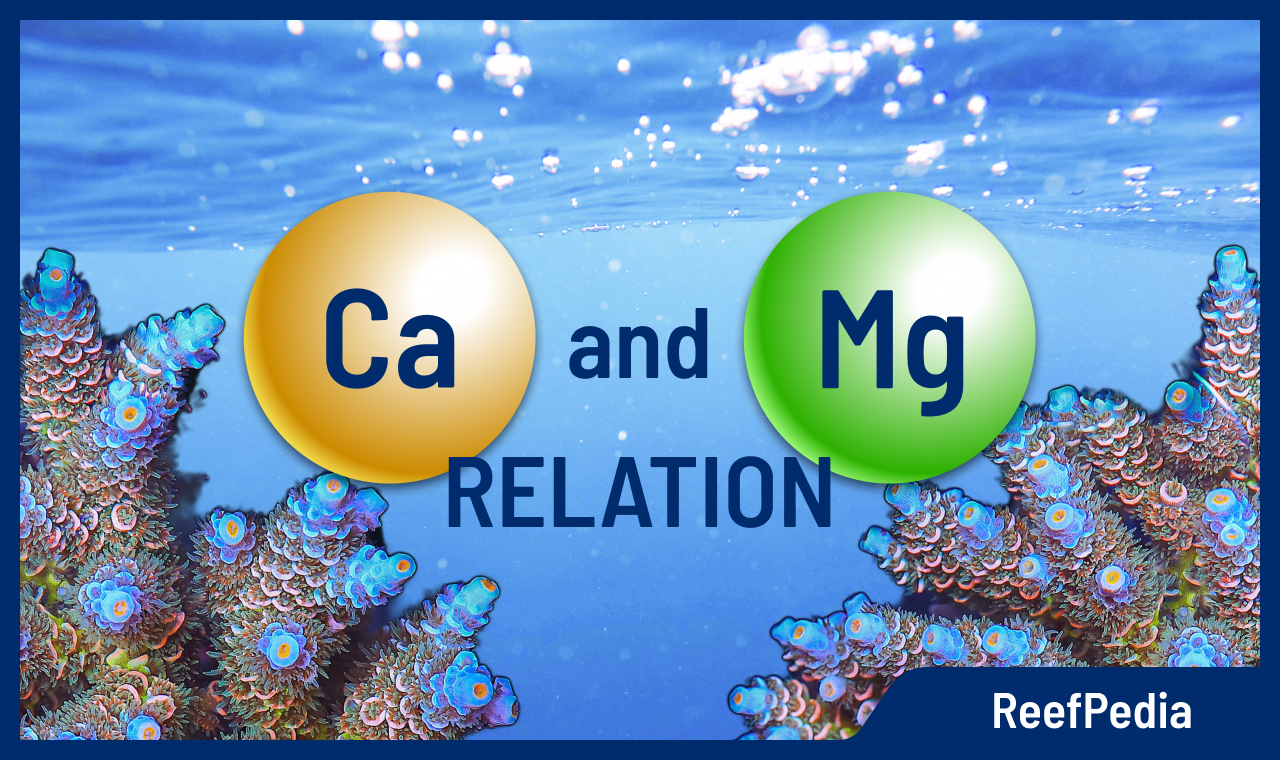Ca and Mg
Both elements play an important role in a marine aquarium. Their level and ratio to each other affect the health of animals in a tank.
Magnesium (Mg) and calcium (Ca) are elements widely distributed in the earth’s crust (Mg 2.09%, Ca 3.63%). In seawater, the content of magnesium salts reaches 0.5%. In turn, in nature, magnesium plays an important role as one of the components of chlorophyll – a green dye found mainly in the leaves and stems of plants. Calcium is the fifth most abundant element in the earth’s crust, it occurs in the form of numerous silicates and aluminosilicates.
In chemical terms, calcium (Ca) and magnesium (Mg) are located in the second group of the periodic table of elements (Mendeleev’s table), the so-called beryl group*. Importantly, the same group of the periodic table also includes other macroelements that are part of sea water, such as strontium (Sr) and microelements, e.g. barium (Ba). The location of calcium and magnesium is not accidental, because elements belonging to the same group of the periodic table show many similarities in terms of chemical and physical properties.
The similar properties of calcium and magnesium affect the chemical balance in the tank. The synergy between calcium and magnesium is known. Calcium is one of the most important, if not the most important, minerals in seawater. It plays an important role in the construction of many marine organisms, including corals, mussels, macroalgae and bacterial biofilms. Magnesium is important for the growth of various marine organisms, including calcareous algae. Although magnesium is no more needed by animals than calcium and carbonates, maintaining a stable calcium content is not possible without adequate levels of magnesium. Some living creatures, such as calcareous algae, mussels and sea urchins, absorb higher amounts of magnesium. One of the most important tasks of magnesium is to help animals and algae absorb calcium. Magnesium also affects the construction of coral skeletons.
The formation of coral skeletons is a complex process, largely based on mineralization. In short, the process involves capturing ions from the environment and introducing them into crystal structures. When the formation of crystal structures is biologically controlled, we refer to it as biomineralization. Both mineralization and biomineralization are precisely controlled from the moment the crystals form. Strict control of this process allows the creation of mineral structures with the desired properties, adapted to the function of the produced hard tissue. Although the chemical composition of these tissues is similar, the structure and mechanical properties differ significantly.
This may be due to the adaptation of tissues to their functions. Precise control of the formation of these structures is important, starting from early nucleation (the beginning of the process), and has a real impact on the formation of final tissues.
It is known that the formation of skeletal structures depends on the ratio of calcium ions Ca2+ to carbonate ions CO32-. The professional literature suggests that a very significant interaction effect of the concentration of Mg ions and the concentration of Ca:CO3 has been observed. Magnesium has a greater influence on the instability of CaCO3 than the Ca/CO3 ratio.
We recommend maintaining a magnesium value of 1250-1450 ppm, with an optimal value of 1350 ppm.
The calcium value, in turn, should be 380 – 460 ppm, and the optimal value is 440 ppm.
Maintaining the recommended magnesium level allows animals and algae to optimally absorb calcium, which allows for efficient skeletal building. Magnesium and calcium are also responsible for maintaining the proper pH and buffering capacity of seawater; they also affect the solubility of other elements, e.g. iodine.
* The term ‘beryl group’ comes from the name of the first element placed at the top of the second column of the periodic table (Be – beryllium).
About author

Magdalena Metzler
Privately, I am a mother and a lover of nature and sport. My main interest is quantum chemistry, which hides a whole lot of unsolved mysteries and connections, which is extremely exciting from a scientific point of view.
In my scientific career, I have conducted international projects focused on innovative solutions for many branches of business, e.g. automotive, construction, and now, of course, marine aquaristics.
Working at Reef Factory gave me a passion for marine aquaristics, which I can develop every day, building a chemistry department and creating products that will help aquarists take care of tanks and ensure the highest safety of animals.
One of the most exciting memories of working at Reef Factory is the commissioning of the ICP-OES spectrometer, which analyzes the elemental composition of seawater. The method of analysis in ICP is based on an analytical technique, which is a combination of my passion for quantum chemistry and marine aquaristics.
I hope you find my articles on ReefPedia interesting and helpful! Happy reading :))
Magda

